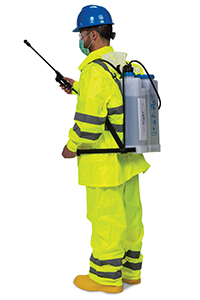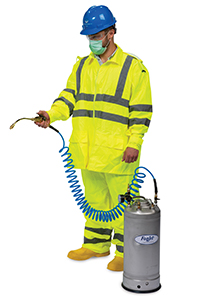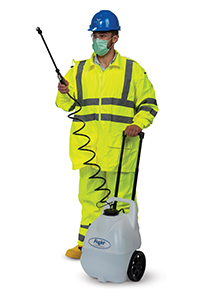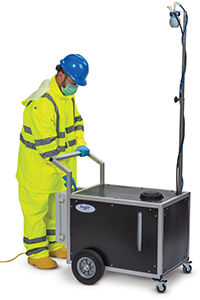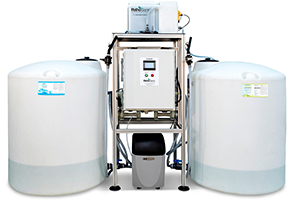Spray Insights
FOCUS ON DISINFECTION
When it comes to disinfection application, there are more options than ever before. Choices range from simple backpack sprayers to complete fogging systems. Here are some tips for determining which type of spray equipment will deliver the performance you need and provide trouble-free operation.
Here are a few factors that should guide your decision:
- The size and type of the area to be disinfected. Match the equipment to the space. Different types of equipment will work better in large open areas than discrete rooms. Also, if workers are tasked with covering large areas in the plant, consider the logistics associated with refilling the units with disinfectant. Units with larger tanks may be desirable if refill opportunities are limited.
- The surfaces that require disinfection. Considering how much wetting a surface can tolerate is importance when choosing equipment. Some equipment produces a traditional spray that saturates surfaces while others produce a fog that barely wets surfaces. Some surfaces and electronics resist moisture better than others so understand what is being disinfected in addition to where disinfection will occur.
- Time of day when disinfecting occurs. When disinfecting areas where people are present, toxicity is a concern. Some types of sprays are better suited for use when people are around while others should be used only in areas that are vacant. Consulting with the manufacturer of the equipment is recommended to ensure the proper surface coverage and level of disinfection are achieved.


